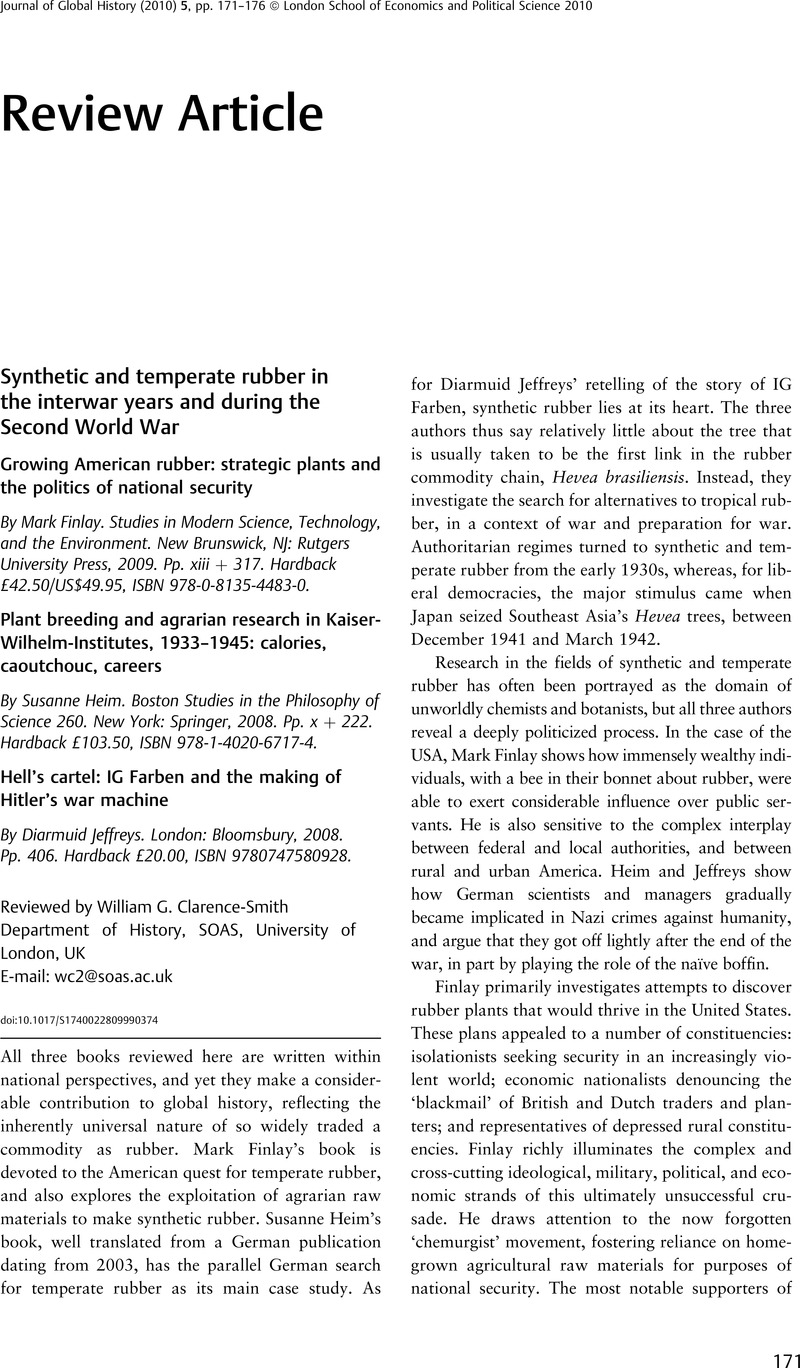Published online by Cambridge University Press: 25 February 2010

1 Mark Mazower, Hitler’s empire: how the Nazis ruled Europe, New York: The Penguin Press, 2008.
2 Peter J. T. Morris, The American synthetic rubber research program, Philadelphia, PA: University of Pennsylvania Press, 1989.
3 J. M. Ball, Reclaimed rubber: the story of an American raw material, New York: Rubber Reclaimers Inc., 1947.
4 Matthew J. Sagers and Theodore Shabad, The chemical industry in the USSR: an economic geography, Boulder, CO: Westview Press, 1990, ch. 7.
5 Rolf Petri, ‘Zwischen Konkurrenz und Kooperation: die deutsche Chemieindustrie und das technische Aufholen Italiens’, in Rolf Petri, ed., Technologietransfer aus der deutschen Chemieindustrie, 1925–1960, Berlin: Duncker and Humblot, 2004, pp. 253–90.
6 Peter J. T. Morris, ‘The development of acetylene chemistry and synthetic rubber by I.?G. Farbenindustrie Aktiengesellschaft, 1926–1945’, D Phil thesis, University of Oxford, 1982.
7 Adam Tooze, The wages of destruction: the making and breaking of the Nazi economy, New York: Viking, 2007.